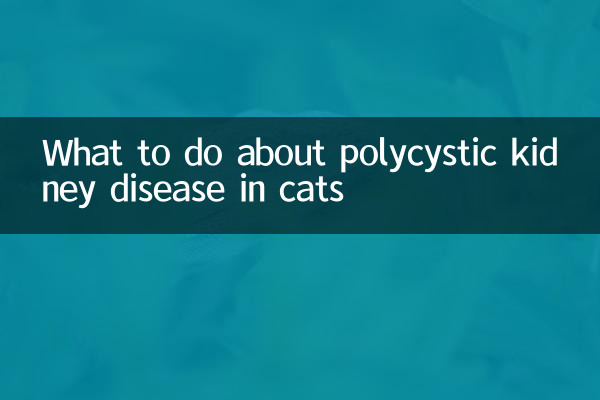What to do about polycystic kidney disease in cats: comprehensive analysis and coping strategies
In recent years, pet health issues have attracted much attention, especially the genetic disease feline polycystic kidney disease (PKD). This article will provide you with a structured data guide from the causes, symptoms, diagnosis, treatment and care, combined with the hot topics and hot content on the Internet in the past 10 days.
1. What is feline polycystic kidney disease?

Feline polycystic kidney disease (PKD) is a hereditary disease, which is mainly characterized by the occurrence of multiple cysts in the kidneys, leading to a gradual decline in kidney function. Persian cats, exotic short-haired cats and other breeds have a higher incidence rate.
| project | illustrate |
|---|---|
| Inheritance | autosomal dominant inheritance |
| High incidence varieties | Persian cats, exotic shorthair cats, Himalayan cats, etc. |
| Age of onset | Symptoms usually appear between 3 and 10 years old |
2. Symptoms of polycystic kidney disease in cats
Symptoms of feline polycystic kidney disease may vary depending on the severity of the condition, but common manifestations include:
| symptom | illustrate |
|---|---|
| Polydipsia and polyuria | The cat’s drinking and urinary output increased significantly |
| decreased appetite | Decreased interest in food and weight loss |
| Vomit | May vomit frequently |
| listless | Decreased activity and appearing tired |
3. How to diagnose polycystic kidney disease in cats?
Diagnosing feline polycystic kidney disease requires a combination of clinical symptoms and medical examination:
| Check method | illustrate |
|---|---|
| Ultrasound examination | The most reliable way to detect kidney cysts |
| blood test | Assess renal function indicators (such as BUN, creatinine) |
| Urine test | Test urine specific gravity and protein content |
| genetic testing | Suitable for early screening of high-risk breeds |
4. Treatment methods for feline polycystic kidney disease
There is currently no cure, but the progression of the disease can be slowed down by:
| Treatment | illustrate |
|---|---|
| Diet management | Prescription food with low protein, low phosphorus and high quality protein |
| drug treatment | ACE inhibitors, phosphate binders, etc. |
| fluid therapy | Subcutaneous rehydration to help kidney detoxification |
| Symptomatic treatment | Antiemetics, erythropoietin, etc. |
5. Daily care for feline polycystic kidney disease
Good daily care can significantly improve the quality of life of sick cats:
| Nursing points | Specific measures |
|---|---|
| Drinking water management | Provide adequate fresh water sources and encourage drinking more water |
| Regular review | Check kidney function every 3-6 months |
| Comfortable environment | Maintain a quiet and warm living environment |
| psychological care | Give more companionship and comfort |
6. Preventive measures
For high-risk breeds, prevention is especially important:
| Precautions | illustrate |
|---|---|
| genetic screening | PKD genetic testing before breeding |
| avoid inbreeding | Reduce the risk of genetic diseases |
| early inspection | Regular physical exams for high-risk cats |
7. Recent hot topics
According to the discussion hot spots on the Internet in the past 10 days, the issues cat owners are most concerned about include:
| hot issues | Attention |
|---|---|
| Diet formula for PKD cats | ★★★★★ |
| The correct method for subcutaneous rehydration | ★★★★☆ |
| New treatment to delay kidney function decline | ★★★☆☆ |
| Quality of Life Assessment of PKD Cats | ★★★☆☆ |
8. Summary
Although feline polycystic kidney disease cannot be cured, with scientific treatment and careful care, affected cats can still maintain a good quality of life for a long time. Regular physical exams, a healthy diet and timely treatment are key. If you suspect your cat may be sick, seek medical attention as soon as possible.
Final reminder: The content of this article is for reference only. Please follow your doctor’s advice for specific treatment options. I hope every cat can live a healthy and happy life!

check the details

check the details